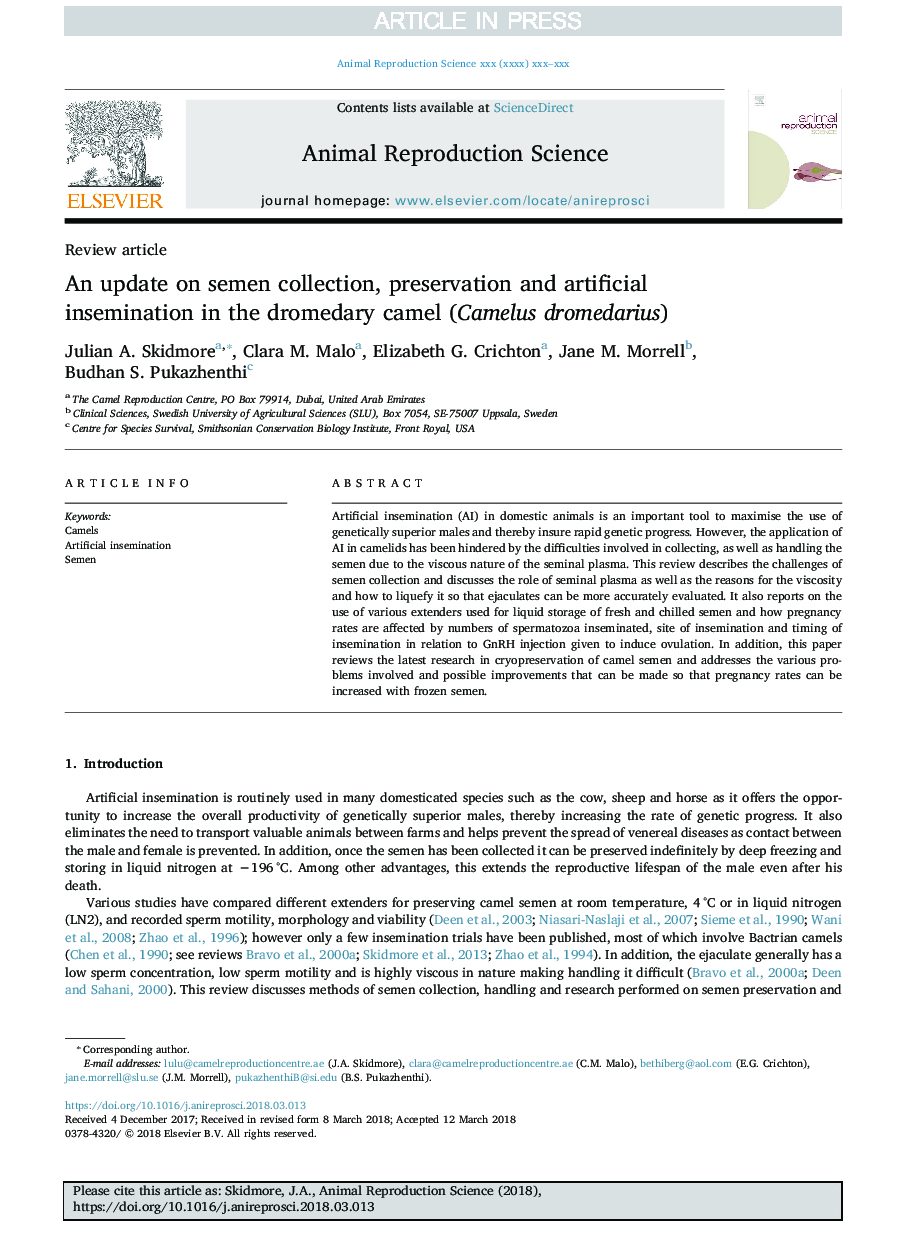| Article ID | Journal | Published Year | Pages | File Type |
|---|---|---|---|---|
| 8403778 | Animal Reproduction Science | 2018 | 8 Pages |
Abstract
Artificial insemination (AI) in domestic animals is an important tool to maximise the use of genetically superior males and thereby insure rapid genetic progress. However, the application of AI in camelids has been hindered by the difficulties involved in collecting, as well as handling the semen due to the viscous nature of the seminal plasma. This review describes the challenges of semen collection and discusses the role of seminal plasma as well as the reasons for the viscosity and how to liquefy it so that ejaculates can be more accurately evaluated. It also reports on the use of various extenders used for liquid storage of fresh and chilled semen and how pregnancy rates are affected by numbers of spermatozoa inseminated, site of insemination and timing of insemination in relation to GnRH injection given to induce ovulation. In addition, this paper reviews the latest research in cryopreservation of camel semen and addresses the various problems involved and possible improvements that can be made so that pregnancy rates can be increased with frozen semen.
Keywords
Related Topics
Life Sciences
Agricultural and Biological Sciences
Animal Science and Zoology
Authors
Julian A. Skidmore, Clara M. Malo, Elizabeth G. Crichton, Jane M. Morrell, Budhan S. Pukazhenthi,
